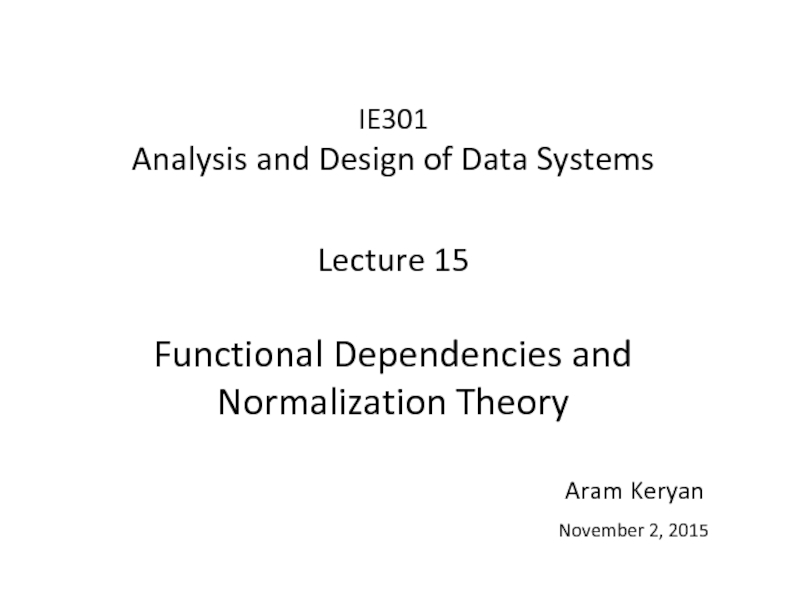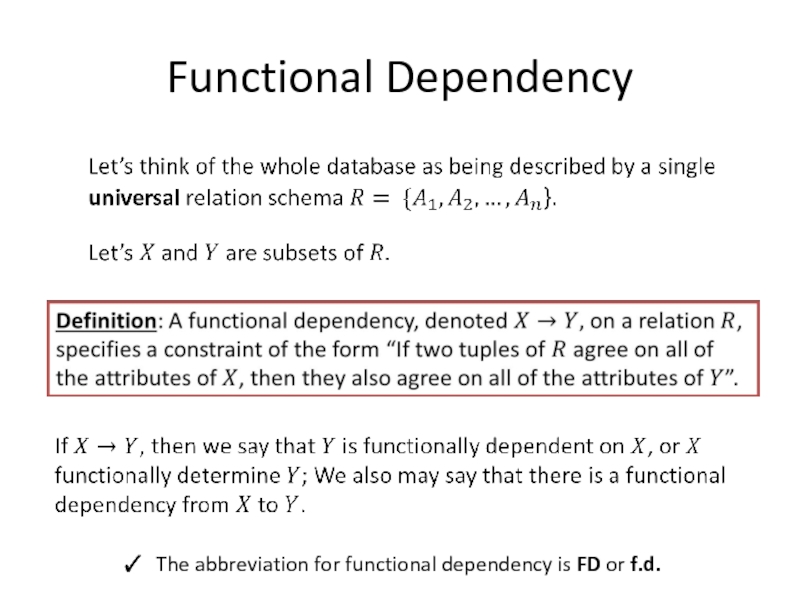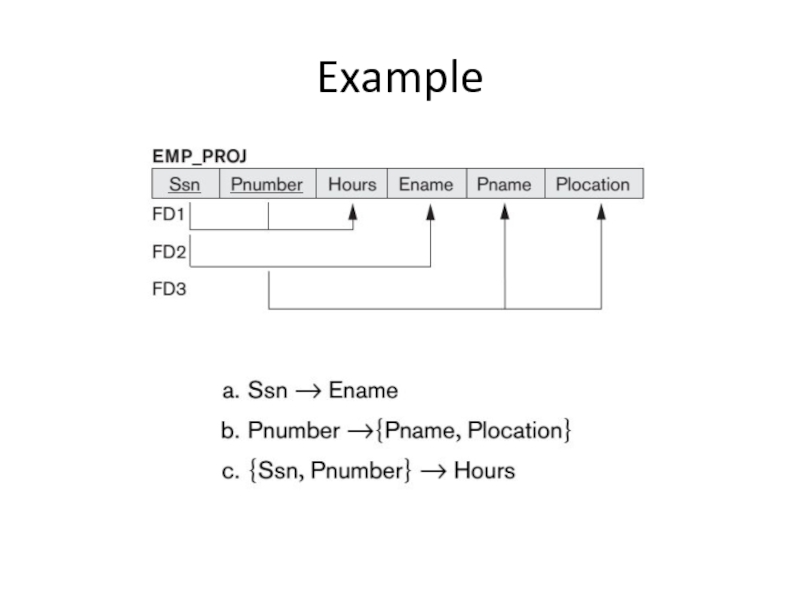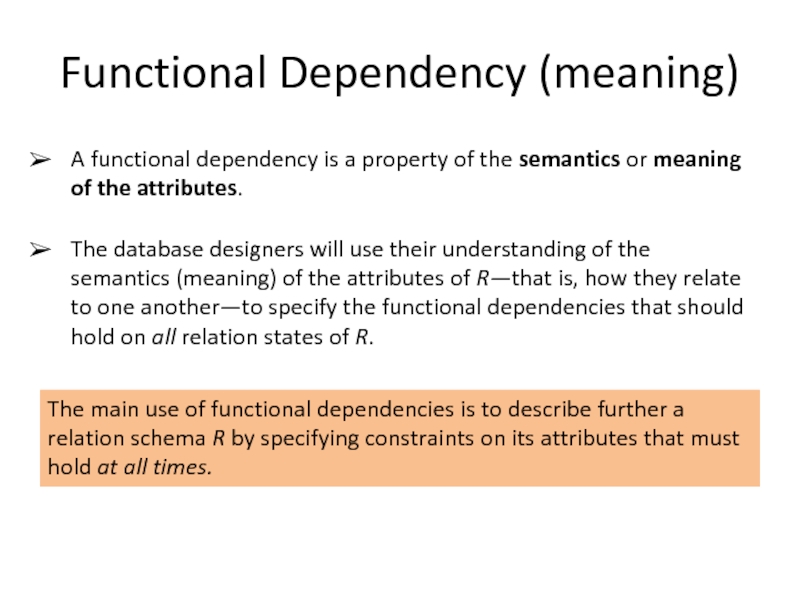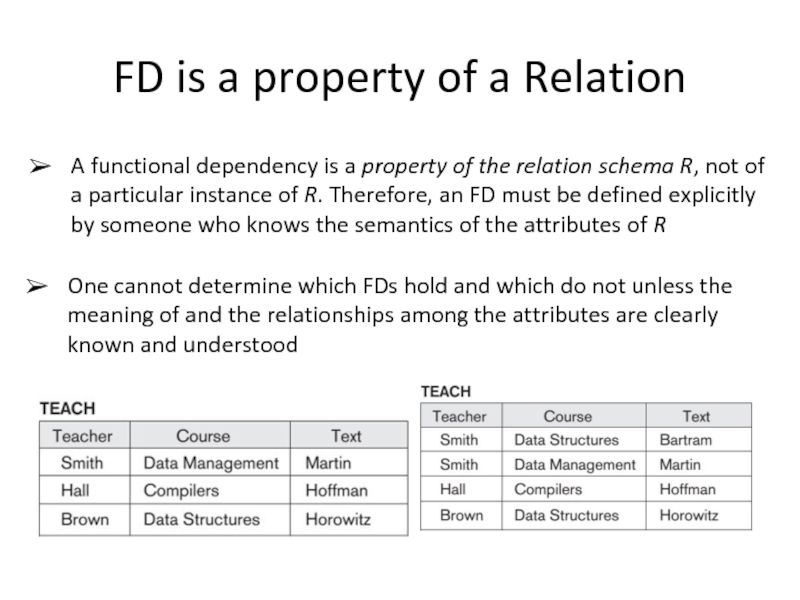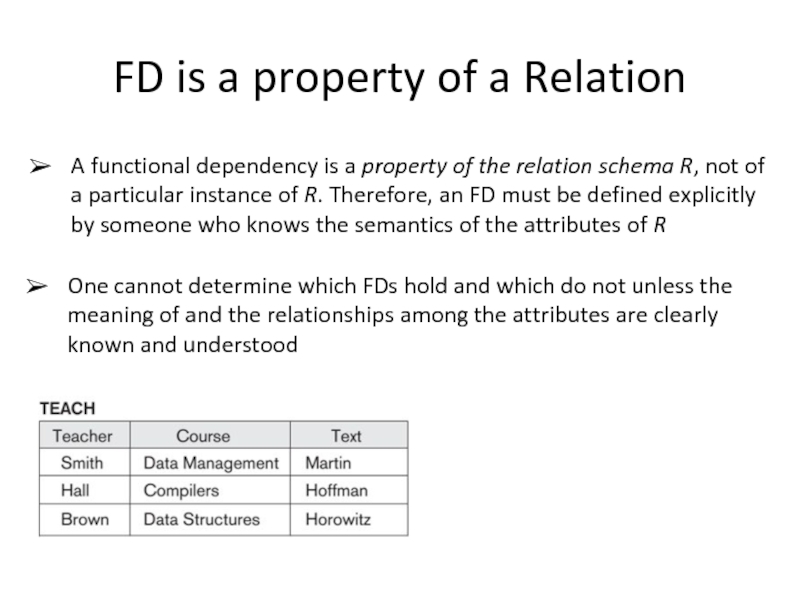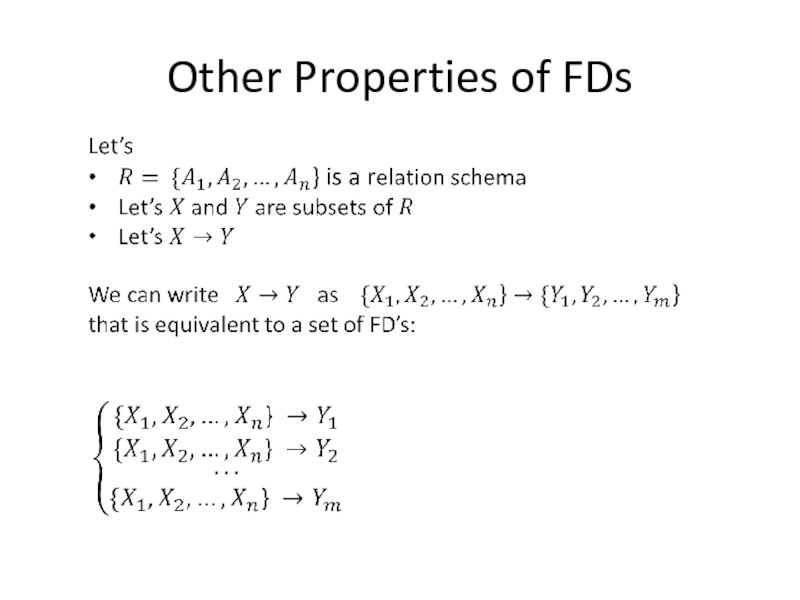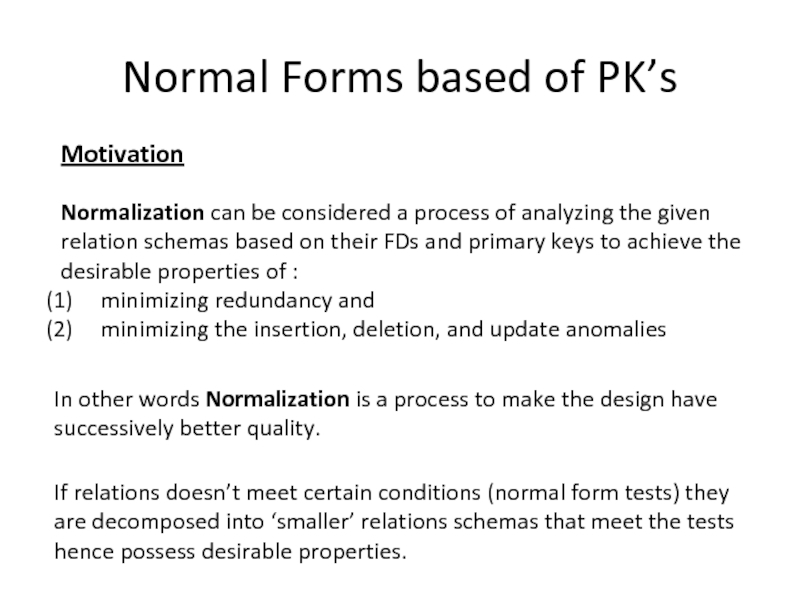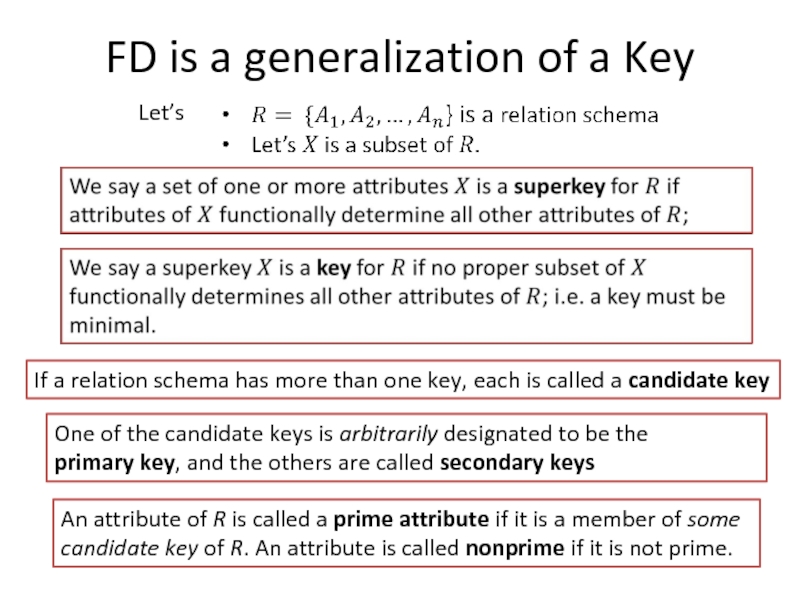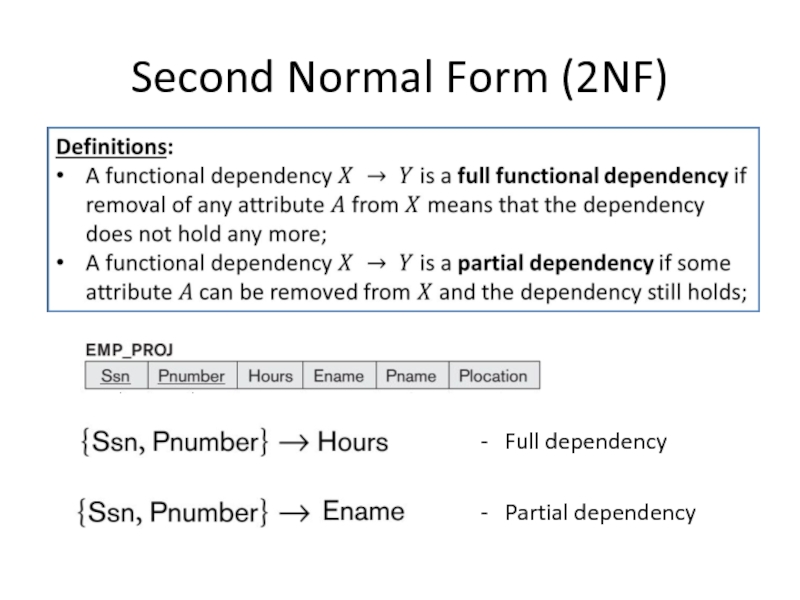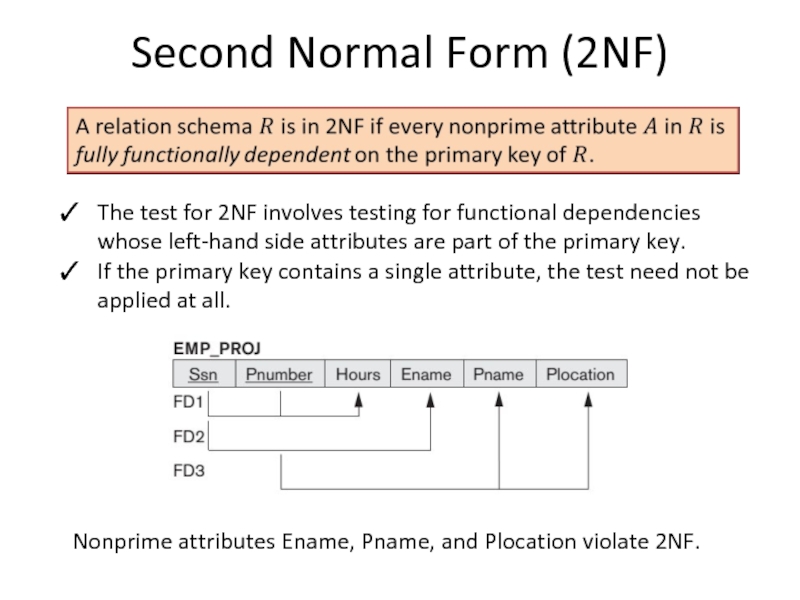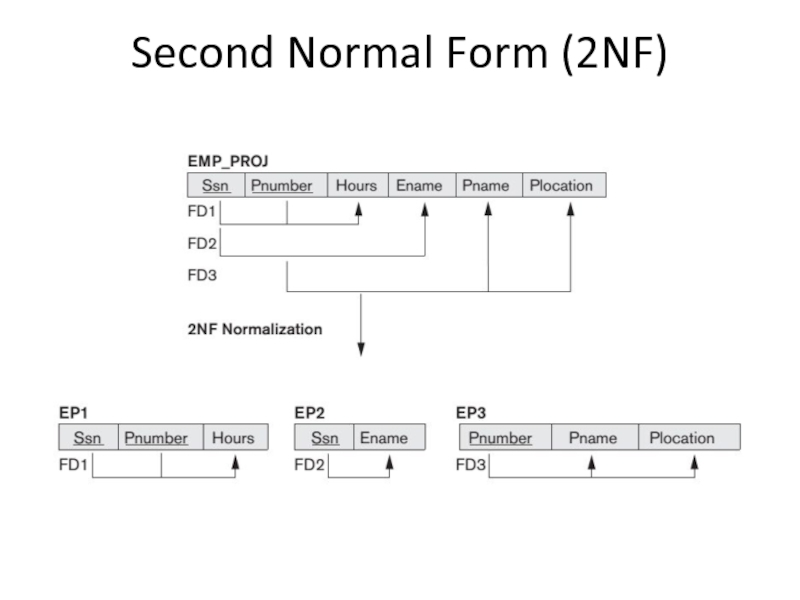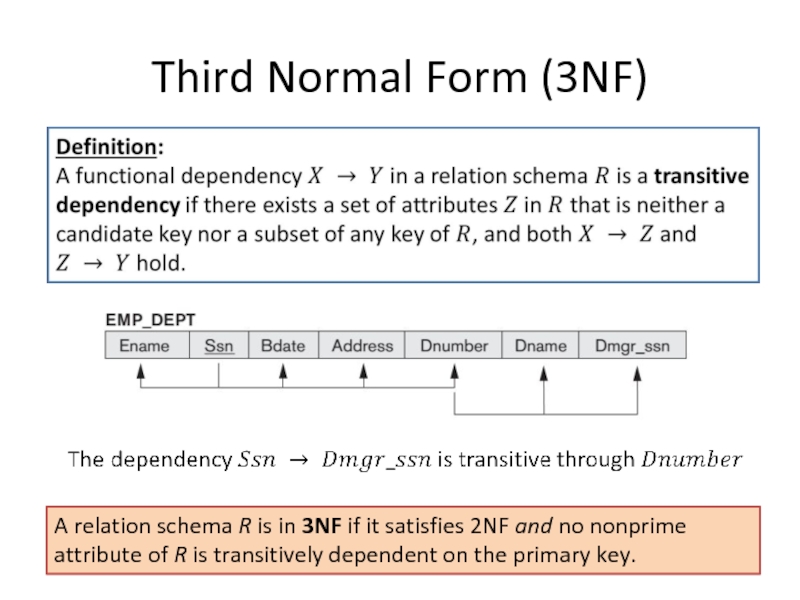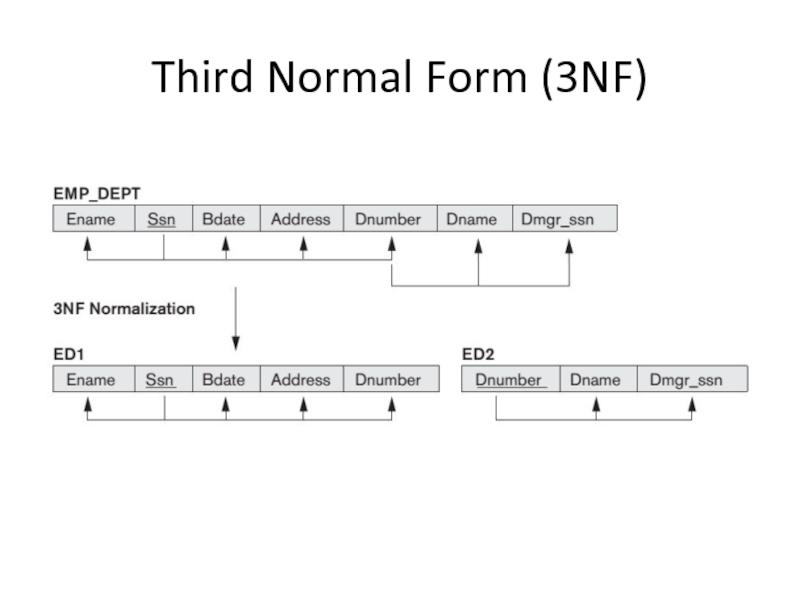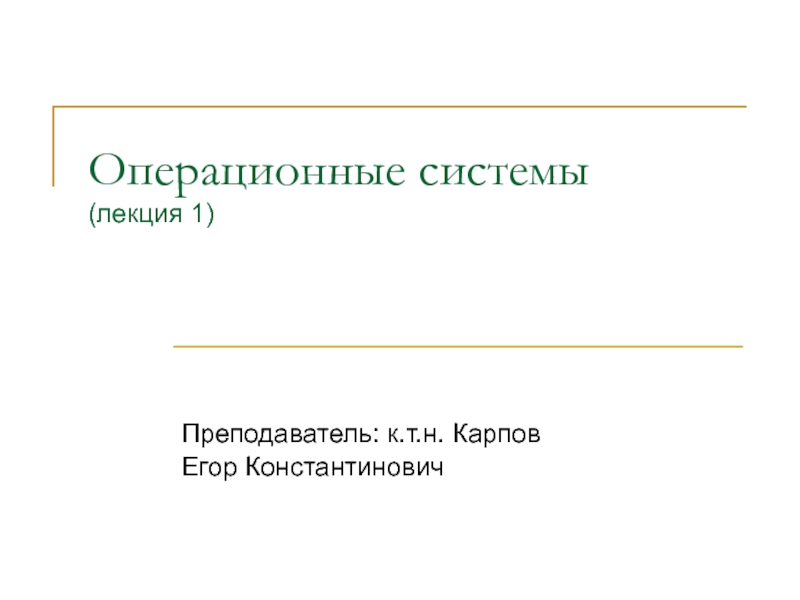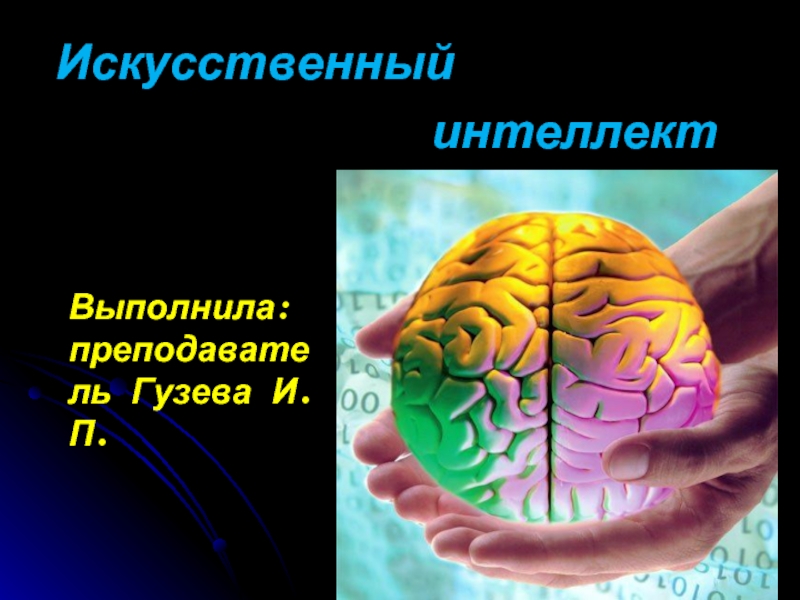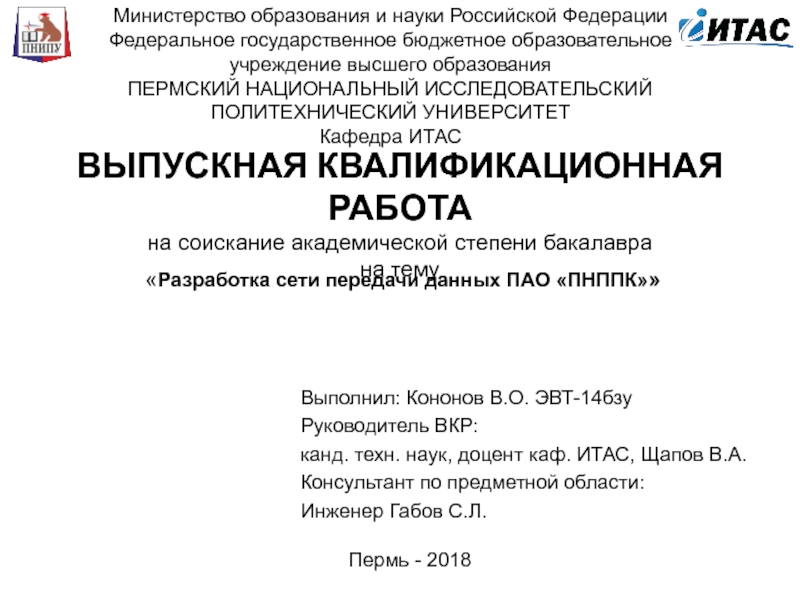November 2, 2015
- Главная
- Разное
- Дизайн
- Бизнес и предпринимательство
- Аналитика
- Образование
- Развлечения
- Красота и здоровье
- Финансы
- Государство
- Путешествия
- Спорт
- Недвижимость
- Армия
- Графика
- Культурология
- Еда и кулинария
- Лингвистика
- Английский язык
- Астрономия
- Алгебра
- Биология
- География
- Детские презентации
- Информатика
- История
- Литература
- Маркетинг
- Математика
- Медицина
- Менеджмент
- Музыка
- МХК
- Немецкий язык
- ОБЖ
- Обществознание
- Окружающий мир
- Педагогика
- Русский язык
- Технология
- Физика
- Философия
- Химия
- Шаблоны, картинки для презентаций
- Экология
- Экономика
- Юриспруденция
Analysis and Design of Data Systems. Functional Dependencies and Normalization Theory (Lecture 15) презентация
Содержание
- 1. Analysis and Design of Data Systems. Functional Dependencies and Normalization Theory (Lecture 15)
- 2. Functional Dependency The abbreviation for functional dependency is FD or f.d.
- 3. Example
- 4. Functional Dependency (meaning) A functional dependency is
- 5. FD is a property of a Relation
- 6. FD is a property of a Relation
- 7. Other Properties of FDs
- 8. Normal Forms based of PK’s Motivation Normalization
- 9. FD is a generalization of a Key
- 10. First Normal Form (1NF) The domain of
- 11. Second Normal Form (2NF) - Full dependency - Partial dependency
- 12. Second Normal Form (2NF) The test
- 13. Second Normal Form (2NF)
- 14. Third Normal Form (3NF) A
- 15. Third Normal Form (3NF)
Слайд 1IE301
Analysis and Design of Data Systems
Lecture 15
Functional Dependencies and Normalization Theory
Aram
Слайд 4Functional Dependency (meaning)
A functional dependency is a property of the semantics
The database designers will use their understanding of the semantics (meaning) of the attributes of R—that is, how they relate to one another—to specify the functional dependencies that should hold on all relation states of R.
The main use of functional dependencies is to describe further a relation schema R by specifying constraints on its attributes that must hold at all times.
Слайд 5FD is a property of a Relation
A functional dependency is a
One cannot determine which FDs hold and which do not unless the meaning of and the relationships among the attributes are clearly known and understood
Слайд 6FD is a property of a Relation
A functional dependency is a
One cannot determine which FDs hold and which do not unless the meaning of and the relationships among the attributes are clearly known and understood
Слайд 8Normal Forms based of PK’s
Motivation
Normalization can be considered a process of
minimizing redundancy and
minimizing the insertion, deletion, and update anomalies
In other words Normalization is a process to make the design have successively better quality.
If relations doesn’t meet certain conditions (normal form tests) they are decomposed into ‘smaller’ relations schemas that meet the tests hence possess desirable properties.
Слайд 9FD is a generalization of a Key
If a relation schema has
One of the candidate keys is arbitrarily designated to be the
primary key, and the others are called secondary keys
Let’s
An attribute of R is called a prime attribute if it is a member of some candidate key of R. An attribute is called nonprime if it is not prime.
Слайд 10First Normal Form (1NF)
The domain of an attribute must include only
Слайд 12Second Normal Form (2NF)
The test for 2NF involves testing for functional
If the primary key contains a single attribute, the test need not be applied at all.
Nonprime attributes Ename, Pname, and Plocation violate 2NF.
